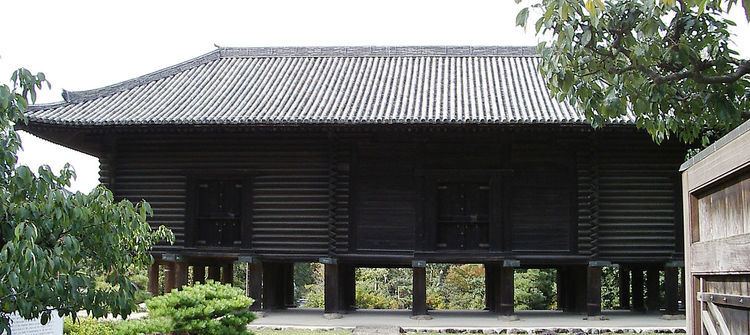Height 14 m | Phone +81 3-3213-1111 | |
 | ||
Hours Closed today SundayClosedMonday10AM–3PMTuesday10AM–3PMWednesday10AM–3PMThursday10AM–3PMFriday10AM–3PMSaturdayClosedSuggest an edit Similar Tōdai‑ji, Nara National Museum, Kōfuku‑ji, Nigatsu‑dō, Todai‑ji Temple Hall of th | ||
The Shōsō-in (正倉院) is the treasure house that belongs to Tōdai-ji in Nara, Nara, Japan. The building is in the azekura log-cabin style, with a raised floor. It lies to the northwest of the Daibutsuden (which houses the Great Buddha). The Shōsō-in houses artifacts connected to Emperor Shōmu (701–756) and Empress Kōmyō (701–760), as well as arts and crafts of the Tempyō period of Japanese history.
Contents
History
The origin of Tōdai-ji Shōsō-in dates back to 756, when Empress Kōmyō dedicated over 600 items to the Great Buddha at Tōdai-ji to express her love for her lost husband, Emperor Shōmu. Her donation was made over five times across several years, then stored at Shōsō-in. Later in Heian period, a large number of treasures, consisting of items and instruments used in important Buddhist services were transferred from a different warehouse in Tōdai-ji.
After the Meiji Restoration, it came under the administration of the national government, and since World War II has been under the administration of the Imperial Household Agency. It is on the UNESCO register of World Heritage Sites as one of the Historic Monuments of Ancient Nara. It is also a National Treasure of Japan.
Building
The building is in the azekura (校倉) log-cabin style, with a raised floor takayuka-shiki (高床式). Shōsō-in is the only building to survive the Siege of Nara in the Heian period. Front width is about 33.1 m, depth is about 9.3 m, 1st floor height is about 2.5 m. The exact construction dates are unclear, but works probably started soon after the empress bequest in AD 756 and definitely were finished before AD 759, when the bequest items storage lists were complete.
Treasures
Shōsōin today holds around 9,000 items, leaving out items that are yet to be classified. While many of the collection are of remainders from the 8th century and are of domestic production, either art or documents, there are also variety of items originating from Tang China. Other material comes from as far as India, Iran, Greece, Rome and Egypt.
Although these collections are not open to the public, selections are shown at Nara National Museum once a year in autumn.
Silk collection
Since 1994, the Imperial Household Agency's Office of the Shosoin Treasure House, which is responsible for the administration of the repository, has been producing exact reproduction of ancient Nara textiles. Apart from the appearance and colour, care has been given to reproduce the production and weaving style. The silk is donated each year by Empress Michiko, who personally runs the Momijiyama Imperial Cocoonery at Tokyo Imperial Palace.
